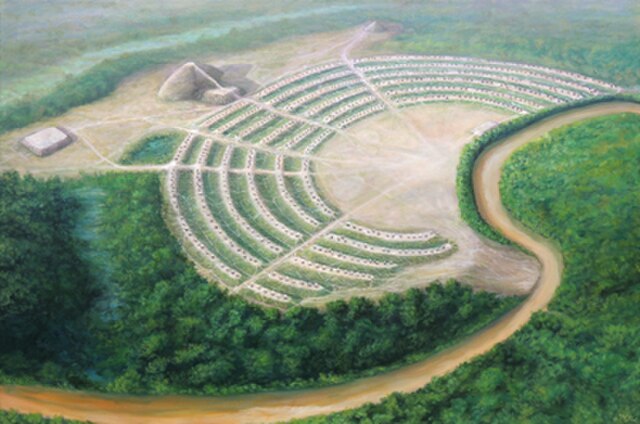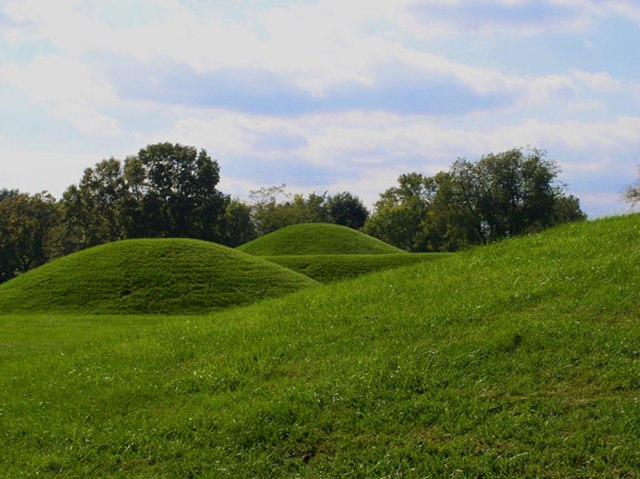Many pre-Columbian cultures in North America were collectively termed "Mound Builders", but the term has no formal meaning. It does not refer to specific people or archaeological culture but refers to the characteristic mound earthworks that indigenous peoples erected for an extended period of more than 5,000 years. The "Mound Builder" cultures span the period of roughly 3500 BCE to the 16th century CE, including the Archaic period, Woodland period, and Mississippian period. Geographically, the cultures were present in the region of the Great Lakes, the Ohio River Valley, Florida, and the Mississippi River Valley and its tributary waters.
Monks Mound, built c. 950–1100 CE and located at the Cahokia Mounds UNESCO World Heritage Site near Collinsville, Illinois, is the largest pre-Columbian earthwork in America north of Mesoamerica.
A mound diagram of the platform mound showing the multiple layers of mound construction, mound structures such as temples or mortuaries, ramps with log stairs, and prior structures under later layers, multiple terraces, and intrusive burials
Illustration of the Parkin site, thought to be the capital of the province of Casqui visited by de Soto
Engraving after Jacques le Moyne, showing the burial of a Timucua chief
In the history of the Americas, the pre-Columbian era, also known as the pre-contact era, spans from the original peopling of the Americas in the Upper Paleolithic to European colonization, which began with Christopher Columbus's voyage of 1492. Usually, the era covers the history of Indigenous cultures until significant influence by Europeans. This may have occurred decades or even centuries after Columbus for certain cultures.
Artist's reconstruction of Poverty Point, 1500 BCE
Hopewell mounds from the Mound City group in Ohio
Monks Mound of Cahokia (UNESCO World Heritage Site) in summer. The concrete staircase follows the approximate course of the ancient wooden stairs.
An artistic recreation of The Kincaid site from the prehistoric Mississippian culture as it may have looked at its peak 1050–1400 CE







